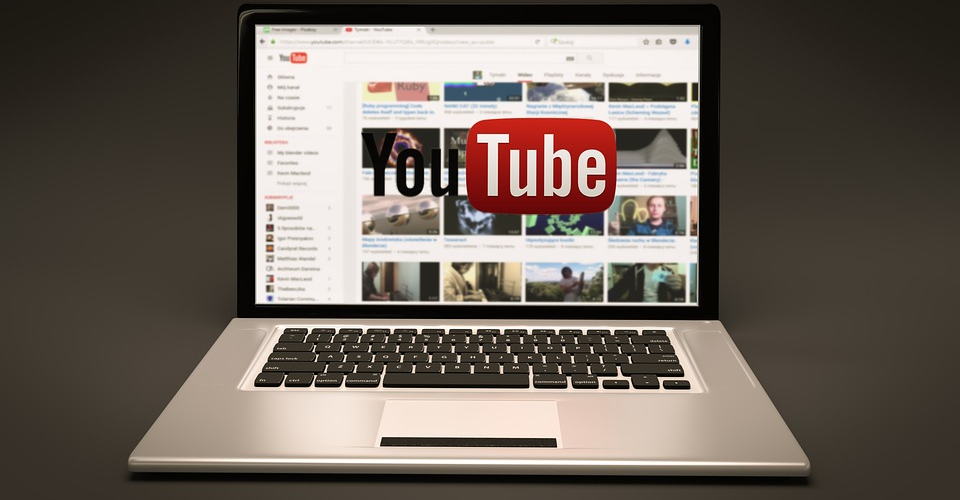How Much Does YouTube Pay? Making Money from YouTube Videos
YouTube allows us to be entertained, informed, and educated unlike any generation that preceded it. Today, ordinary people with a flair for content creation can reach millions of viewers regardless of their location or background. While there’s something to be said for making videos out of love and passion, it’s now possible to use that drive and turn it into a steady source of income. Established YouTubers already make ridiculous amounts of money by playing with toys or just being themselves, so why shouldn’t you try too?
That brings us to the subject of this article – how much does YouTube pay? What can someone who’s starting out on their journey expect to earn down the line? Which related income streams do YouTubers take advantage of? The answers to these questions are based more on estimates than hard data. Nevertheless, you’ll have a better understanding and be more realistic about what you can expect to earn from YouTube when you’re done reading.
Ad revenue

The first income any YouTube makes comes from ad revenue once they join the YouTube Partner Program. You won’t be able to start earning ad revenue right away since you have to meet certain milestones first. For your channel to be eligible for monetization, you need to establish yourself as a liked and trusted YouTuber. The minimum criteria are 1,000 subscribers and 4,000 hours of your videos watched in the past year. You can enable monetization once that goal is reached, and ads will start showing up before and during your videos.
There are two ways you get paid for ads. One is based on the number of impressions, i.e., how many times viewers see the ads. The other takes into account the number of clicks an interactive add featured on your videos receives. An add needs to reach 1,000 impressions to generate money while click-based ads pay each time someone clicks on them.
How much do these ads pay?
The answer to that is both imprecise and complicated. Many factors go into determining the actual amount a YouTuber gets. These are known as CPM or cost per thousand (mile in Latin) for impression-based ads and CPC or cost per click for click-based ones. The rates vary drastically, so you might get paid $0.10 or as much as $7.50 for 1,000 ad impressions.
The great thing about getting paid via ads is that you don’t have to do any extra work. Google owns both YouTube and AdSense, the company which handles ad campaigns. When a client wishes to advertise on YouTube, they create an ad campaign on AdSense, choose which ads to include, and who their target audience is. Google then determines the cost the client must pay to have their ads featured. As the ad’s publisher, the content creator whose videos they’re displayed on gets 68% of the revenue while Google takes the remaining 32%.
What factors influence YouTube ad revenue?
The good news is that you can influence and increase ad revenue based on your videos’ performance. The most obvious thing to do is to boost your views – more people watching means more ad impressions and more clicks. An increase in views means little on its own, though – the viewers need to find your content engaging. Among other things, YouTube ranks channels based on retention rate. This means the more time viewers spend continuously watching a video, the better it is perceived. That’s why many YouTubers upload videos longer than 10 minutes.
Lengthy videos give you more opportunities for ad placements. However, just because a video is long-winded doesn’t mean that it has value. You can create an hour-long makeup tutorial and have the video tank because your delivery is poor or you haven’t done your research. That’s why it’s crucial to structure every video in a way that will capture your audience’s attention and give them real value.
The criteria don’t end there, however. Your audience’s age group and location matter too. YouTube uses a tiered list of countries when determining how to set the cost of an ad. You’ll receive a tidy sum if you have a numerous and active audience from countries like the USA, Canada, and the UK. If your viewers come primarily from Asia or Africa, your ad income will be substantially smaller.
Keep in mind that YouTube ads are an unreliable and shifting source of income. It’s not enough that an audience sees the ads – they also have to either click on them or not close them from 5 to 30 seconds. If viewers close the ads earlier or don’t click, you get nothing!
The importance of your niche
The last major factor ad revenue depends on is your channel’s niche. As a beginner, you need to determine which niche to cater to and stick with it! Although it’s tempting to research what niches are the most popular & profitable, you should pick one you have some knowledge of and which interests you. It’s possible to eventually make a living off of YouTube even if you’re creating content in niches like gaming or health & fitness. What matters most is a unique approach supported by charisma, research, and friendliness.
Your niche’s ad revenue potential depends on the demand for certain topics and your competition. At first, you’ll want to make videos with a specific audience in mind and tailor them to get the most from the few ads they’ll attract. You can use Google’s own tools, Ads and Trends, to figure out which keywords are most profitable and make videos based on them. Once you establish yourself, your topics can become more general within the niche since the increased number of displayed ads will make up for their lower cost.
How much will the ads shown on my videos be worth?
That’s a lot of information to take in, so here’s an example to make things simpler. Let’s say you run a modestly successful food channel and have a video that has reached 500,000 views. The video features one 10-second ad with a CPM of $3. Out of the 500,000 viewers, 300,000 watched the advertisement until the end and qualify for a payout. That means the overall CPM for that video is $900. YouTube takes its 32-percent cut, and you’re left with $612.
Affiliate marketing

As your audience and popularity grow, so does the variety of your streams of income. Affiliate marketing is the easiest one to implement since it requires minimal input. Engaging in affiliate marketing means you’re recommending a product and linking to an online store in the description where people can purchase it. This affiliate link takes them to a special version of the store’s page. If they buy the item, you get a commission.
Your first affiliate links should lead to Amazon. The biggest online retailer is also one of the easiest to cooperate with. Their affiliate application process takes a couple of days, and if you’re accepted, you can start receiving a commission on linked items. The commission used to be volume-based, so small-time partners were getting a smaller percentage.
Now the percentage depends on the type of product you’re advertising. Toys pay out a 3% commission while selling clothes nets you 7% of their price. Here’s a list of percentages to give you a better idea. If a product isn’t on the list, it is categorized as other, and its commission is 4%.
The 24-hour token is another strong incentive to use Amazon. Users who click on your link rarely buy the advertised product. However, they might start shopping and buy something else. As long as your custom affiliate link was the last one they clicked on, you’ll get a commission on the first item they purchase in the next 24 hours! That means someone could click on a blender you recommend and end up buying an air fryer instead. Either way, you still get a cut!
Affiliate marketing can be a gateway to other earning opportunities. A manufacturer of a product you recommended might decide they like your content so much they want to sponsor you. Unbiased and thorough reviews will establish you as an authority on the subject, and someone the audience can trust. That will then lead to a rise in popularity, views, and ad revenue.
Becoming an instructor on Udemy

YouTube is an endless source of funny cat videos, but it’s also one of the best places to learn anything. Once you’ve demonstrated your expertise to your YouTube audience, you can take the next step and monetize your knowledge further on Udemy.
Udemy is a site which lets you create courses on various subjects ranging from business and programming to the arts & effective time management. Students enroll in your class and complete it at their leisure, but they have to pay an upfront fee if you don’t make your course free. The cost can range from $20 to hundreds of dollars per student per course. Udemy offers a more structured learning environment than YouTube since you can enhance your courses with assignments and interact with students if they need help.
YouTube offers the most lucrative way of advertising your course since it lets you do so for free. Udemy gives you a coupon code which students use to access your course directly. Instructors get paid 97% of the course’s price for students who enroll this way. Your course might also get discovered organically on Udemy, in which case your cut is 50%.
There are lots of ways you can use YouTube to plug your Udemy course. The easiest would be to advertise the course as part of a video. Getting people interested in the course will require more work, though. You could upload the first video in a lecture series onto YouTube for free and link from there. Or you could create a beginner course on YouTube and offer an advanced version on Udemy.
Create a Patreon account

Some channels aren’t suited for affiliate marketing and Udemy. Maybe you have a strong opinion against YouTube’s ad-focused payment structure or are an artist whose work is impossible to quantify. That’s when you turn to your adoring fans! Thanks to Patreon, your viewers can make monthly pledges starting at $1 to support your work.
Your main Patreon page shows patrons what you’re about and why they should endorse you. It’s the place where you present your pledge structure and tell patrons what they can expect when pledging a certain amount. The most common patron rewards include exclusive content, access to patron-only forums & community servers, and getting to see videos before you release them to the general public.
You determine the payment tiers as well as the rewards. Naturally, better patronage demands more substantial or more personal rewards. You might want to reward the most devoted patrons with unique art pieces or personalized tutorials.
YouTube’s monetization policy has become unpredictable. Many videos are being demonetized, sometimes unjustly. That’s why having a strong following on Patreon is crucial if you want to keep making money on YouTube without having to compromise your persona and the quality of your content.
Create your own merchandise
With chanel growth comes the opportunity to refine and build up its identity. Maybe you’ve hired an artist to create a recognizable logo, or a phrase you said has since become legendary in your YouTube following. These unique features are another thing you can monetize by starting to sell channel-specific merchandise.
The first step involves designing your merchandise. The simplest thing you can do is decide on a theme or featured image and have a third party handle the rest. On the other hand, some YouTubers have a hand in the entire design & execution process and want to ensure their followers get the best quality possible. You’ll want to take the middle ground and make sure that your merch is recognizable and tasteful while not getting so bogged down with it that you neglect to make videos.
T-shirts are the most common type of YouTuber swag. They’re easy to mass-produce, and there are specialized companies that’ll take care of production, distribution, and advertising. Clothes are by far the most popular items, but YouTubers also put out mugs, books, stationary, cellphone cases, and a host of other knick-knacks.
Keep in mind that merch isn’t likely to generate substantial sales unless you’re a huge YouTube celebrity.
Attract sponsors
Sponsors are companies and businesses who want to work with you in promoting their products or services. A channel becomes eligible for sponsorship if it has a dedicated audience and meshes well with a company’s brand & values. Your continued efforts and excellent YouTube track record may eventually attract a sponsor. Alternatively, you can take the initiative and start reaching out to them instead.
There are three kinds of sponsorships to consider. The first is a one-off deal – you get a fixed sum and have to advertise something in return as stipulated in a contract. The most common ones have you either making a video dedicated to the sponsored content. Alternately, you’ll need to set aside a segment in a few upcoming regular videos where you’ll talk about the product or service. Some sponsors will require you to read from a script while others let YouTubers decide for themselves how to best incorporate the shoutout.
The second level is similar to affiliate marketing, but you work with the company that makes an advertised product directly. You agree that you’ll incorporate the product into your internet persona lifestyle and get compensated for it. Compensation can take the form of money, special discounts, free merchandise, and so on.
The third and highest-paying sponsorship tier is collaborating with the sponsor more closely. YouTubers who manage to secure such a deal become ambassadors for the company and promote their products over a long period. Some collaborations even result in the creation of a new brand you get a say in shaping. You also receive a commission on sales which may rival all your other revenue streams combined.

